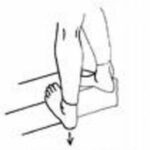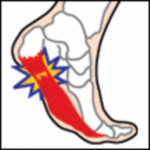Chronic heel pain hurts, and it can be nearly disabling. Officially called plantar fasciitis, chronic heel pain makes it difficult to walk. More than 2 million Americans suffer from this condition.
In a recent press release, researchers announced that they have begun to study the biomechanics of how the foots connective tissues and muscles work so that they can address the problem of chronic heel pain. By understanding the biomechanics of chronic heel pain, physicians will be better able provide more specialized treatment.
In the past, physicians have associated the problems of plantar fasciitis with the foot over-stretching, causing the connective tissue in the foot to be inflamed. However, this theory has never been proven. Researchers now suspect that chronic foot pain is more complex.
The preliminary results that researcher and Ph.D. candidate, Ryan Chang, of the University of Massachusetts, Amherst, has discovered reveals that chronic heel pain is related to flexibly in the arches of the foot. When the foot arch is flexible, this causes the back and front portions of the foot to move out of synch, thus impacting impact people who have this disorder.
Additional research will utilize magnetic resonance imaging (MRI) and spectroscopy (MRS). Researchers will be studying the results to determine what causes the biomechanics of the foot to work in this way. People who do not have chronic heel pain do not have the same biomechanics at work while they walk or move.
“One of the biggest problems is that there’s no good way to diagnose this disorder based on people in a static position. If you’re standing, you’re not going to see a problem that’s a result of motion. You have to watch a person walking to understand why they have that pain,” said Joseph Hamill. Hamill leads the biomechanics laboratory at the University of Massachusetts, Amherst.
People who need to work while standing are often affected by chronic heel pain. Occupations at high risk include construction workers, flight attendants, hospital workers, postal workers, retail workers, and service workers. If you were to ask someone who has this problem what it feels like, they would tell you it feels like there is sharp, knife-like pain that is in their heel.
About the study
To determine the cause of plantar faciitis, researchers are comparing the biomechanics of how people walk. Participants have 11 different pieces of reflective tape placed on various parts of their ankle, foot, and calf.
While participants are walking, several infrared cameras film them. These cameras “see” pieces of the reflective tape. This data is then translated to a computer based 3-D image that shows the entire movement of the foot and foot muscles.
Scientists are still seeking participants for this study. To participate, you must have been diagnosed with plantar fasciitis, or it’s symptoms, be between 30 to 55 years old, and be healthy and non-obese. You can email Ryan Chang at ryanc@kin.umass.edu for more information.
Source:
http://www.newswise.com/p/articles/view/535419/




